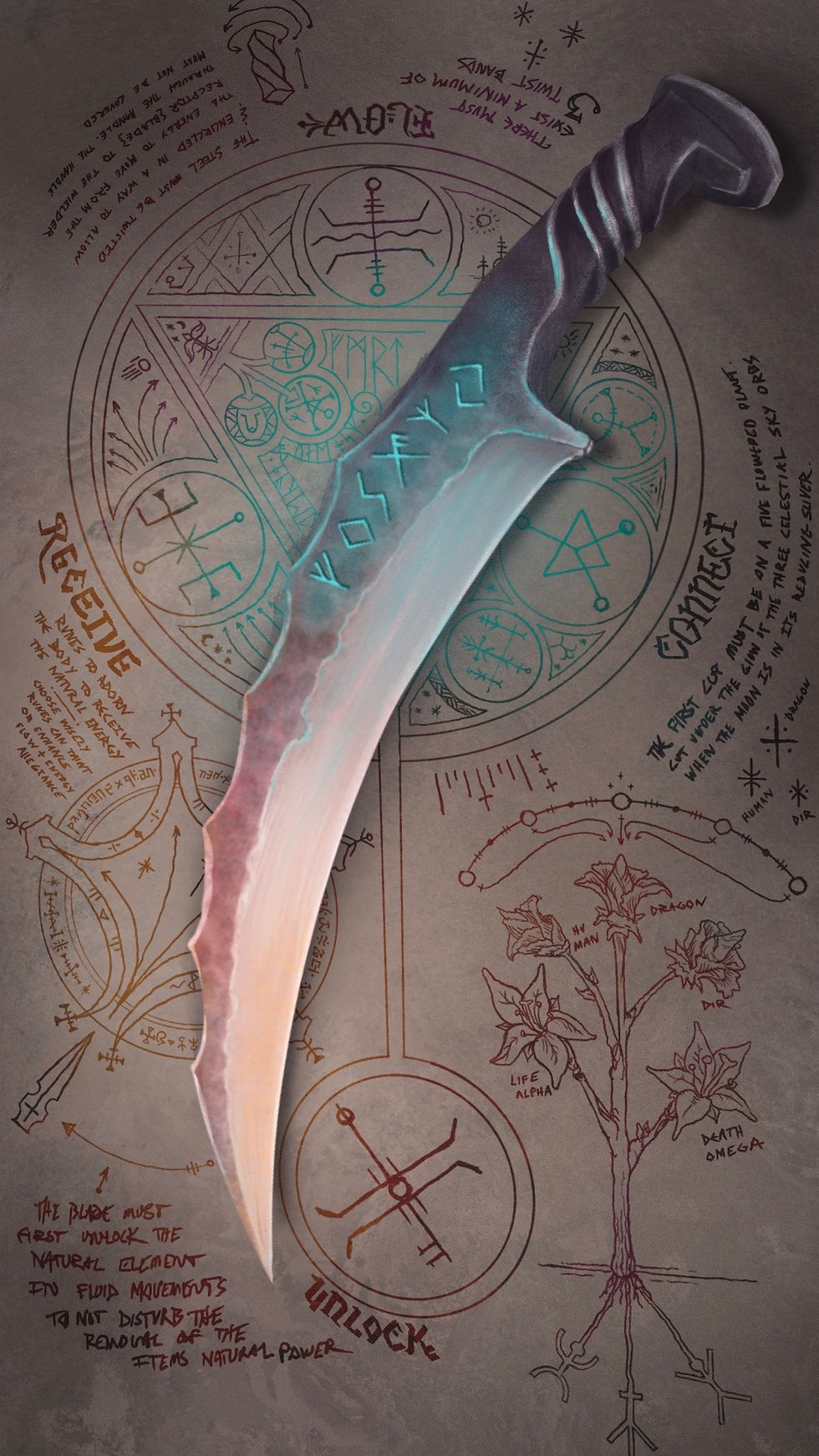What To Do When Your Experience Is Done
- andrewrbennett12
- Apr 14, 2023
- 3 min read

One of the most asked questions I get whether I am tending to our dragons or helping folks get hammered in Little Bavaria is "How do I care for my knife?" This is an excellent question, worth your time to learn the answer. With proper care, your newly forged knife will become an heirloom worthy of display for many years to come.
For those with limited experience caring for hand forged blades this can seem trickier than it really is. It is true that a hand forged blade, like the process itself to make it, needs a bit more attention than cutlery from a box store. No disrespect to your butter knives back home, but your new blade is leagues apart from what hangs out next to the forks and spoons. While our blades are not dishwasher safe, following a few simple steps to keep your knife sharp and stain free is as easy as 1, 2, 3.
Step One:
First things first. Keep it dry! Never put your knife in the dishwasher or leave it soaking in water. Dry your knife completely using an absorbent towel. We find paper towels work the best.
Also, moisture can be sneaky and lurk where you may not expect it. At the end of your forging journey you received a sheath which has been hand constructed to fit your blade. Understand the purpose of a sheath. The sheath is designed for safely wearing and carrying your blade, not storage. Whether you had decided to keep the free sheath accompanying your experience or upgraded to a sheath that better suits your style, your sheath is made from genuine natural leather. Leather has a tendency to attract moisture - which is water for those unfamiliar. Water and metal do not get along.
In an effort to keep your blade rust free make sure to never store your knife in your leather sheath for long periods of time (six months plus). While your blade will be fine during hikes or even long camping trips nestled safely in your leather sheath, over periods of months or years the moisture attracted by the leather will eventually begin to corrode your blade. A corroded blade is not a good blade. So, when not carrying your knife out and about, store the blade outside of the leather sheath on a wooden magnetic strip or a water-resistant material such as waxed-canvas.
Step Two:
Keep it clean! Now that you know how to store your knife for the long-term you will want to know how to care for it in the short-term. After periods of use such as cutting, chopping, camping, or sailing the seven seas on a feared pirate ship, you'll want to apply a small amount of either oils or waxes to your blade to keep it clean and further prevent corrosion. You can hand wash with warm soapy water, and no abrasive sponges. Make sure to completely dry and seal with an oil or wax after using soapy water. Keep in mind what goes on your blade goes into the things you cut such as fruit, vegetables, and meats. What goes into your food goes into your body. So, never use something that isn't food safe on your blade. I recommend Axe Wax which is made from all natural compounds and food safe ingredients while still keeping all the necessary properties to keep your blade polished and ready to use.
Step Three:
A blade is only as good as it's edge. Unless you're spreading jam on toast you will want a sharp blade which means you will want a honed edge. There are a number of ways to hone your blade's edge and keep it sharp. My favorite, and the one I recommend to all our guests, is to use a combination of a leather strop and a ceramic sharpening rod.
Use the ceramic sharpening rod to slide up and down each side of the blade's edge then follow that up with gentle rubbing of the leather strop to remove any residual burs and jagged bits that will dampen your knife's edge. If you feel like a chef using the rod and feel like an old time barber using the strop you're doing it right.
Consider sharpening your blade after each session of intense cutting. Especially if those cuts were made against tougher materials such as rope, burlap, leather, or hides.
And there you have it. Three easy steps to take care of your hand forged masterpiece. If you have other knife care techniques we'd love to hear them in the comments. Still not sure where to start? Our Premium Knife Care Package will get you in the right direction with all of the tools you'll need to maintain a sharp and reliable blade.
Happy Forging! Let's Get Hammered!
A. Bennett
Captain of The Red Shirt Army at the Dragon Forge Experience










A couple of the links on this page ("upgraded" sheath and "Axe Wax") don't work, all I get is a page that says "This product couldn't be found".
I made a double edge dagger at the AZ Ren Faire. The sheath I got with the dagger doesn't really fit well, it's made for a single edge bowie style knife, and is too long. Wish you offered a more appropriate sheath. Otherwise, a fine experience was had 😊